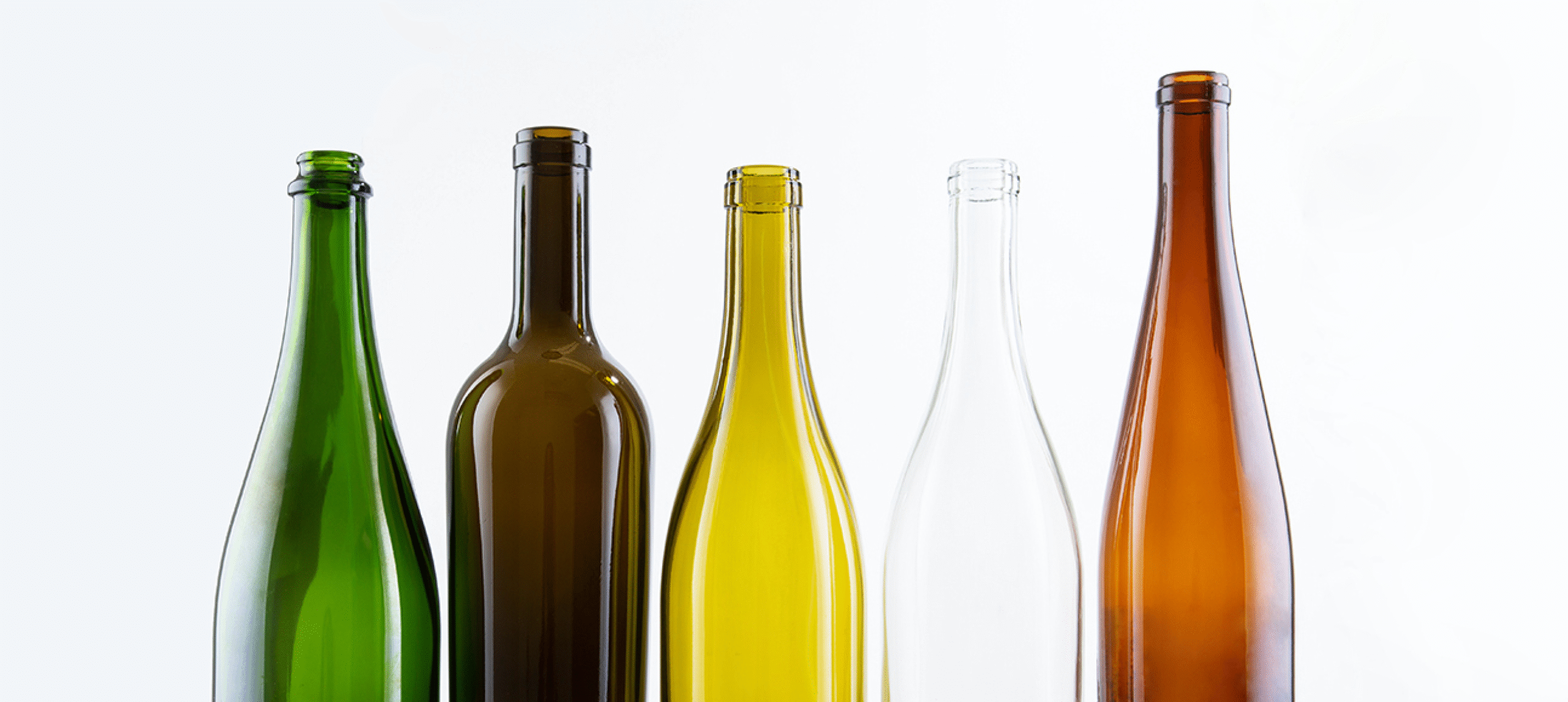
The Art and Science Behind Colored Glass Bottles
Colored glass bottles aren’t just containers—they’re a perfect blend of science and craftsmanship. From protecting sensitive contents to adding visual appeal, these bottles have become essential in industries like beverages and cosmetics. So, how are they actually made?
It all starts with simple raw materials: quartz sand, soda ash, limestone, and crushed recycled glass, known as cullet. But what gives these bottles their beautiful hues? The secret lies in metal oxides. For example:
Chromium oxide brings out rich greens.
Cobalt oxide creates stunning blues.
Manganese or iron-based compounds can produce anything from soft amber to deep violet.
Once the mixture is ready, it’s melted at scorching temperatures—anywhere between 1400°C and 1600°C. This turns everything into smooth, liquid glass, with the color evenly spread throughout.
Next comes shaping. The molten glass is formed into bottles using molds, and then carefully cooled in a process called annealing. This step is crucial—it removes internal stress and strengthens the glass, preventing cracks later on. But before any bottle makes it to the shelf, it goes through strict quality checks. Automated vision systems scan for imperfections like bubbles, cracks, or uneven coloring, ensuring only the best ones move forward.
The result? Strong, beautiful, and functional colored glass bottles that not only protect their contents from light but also add a touch of elegance to everyday products.
Table of Contents
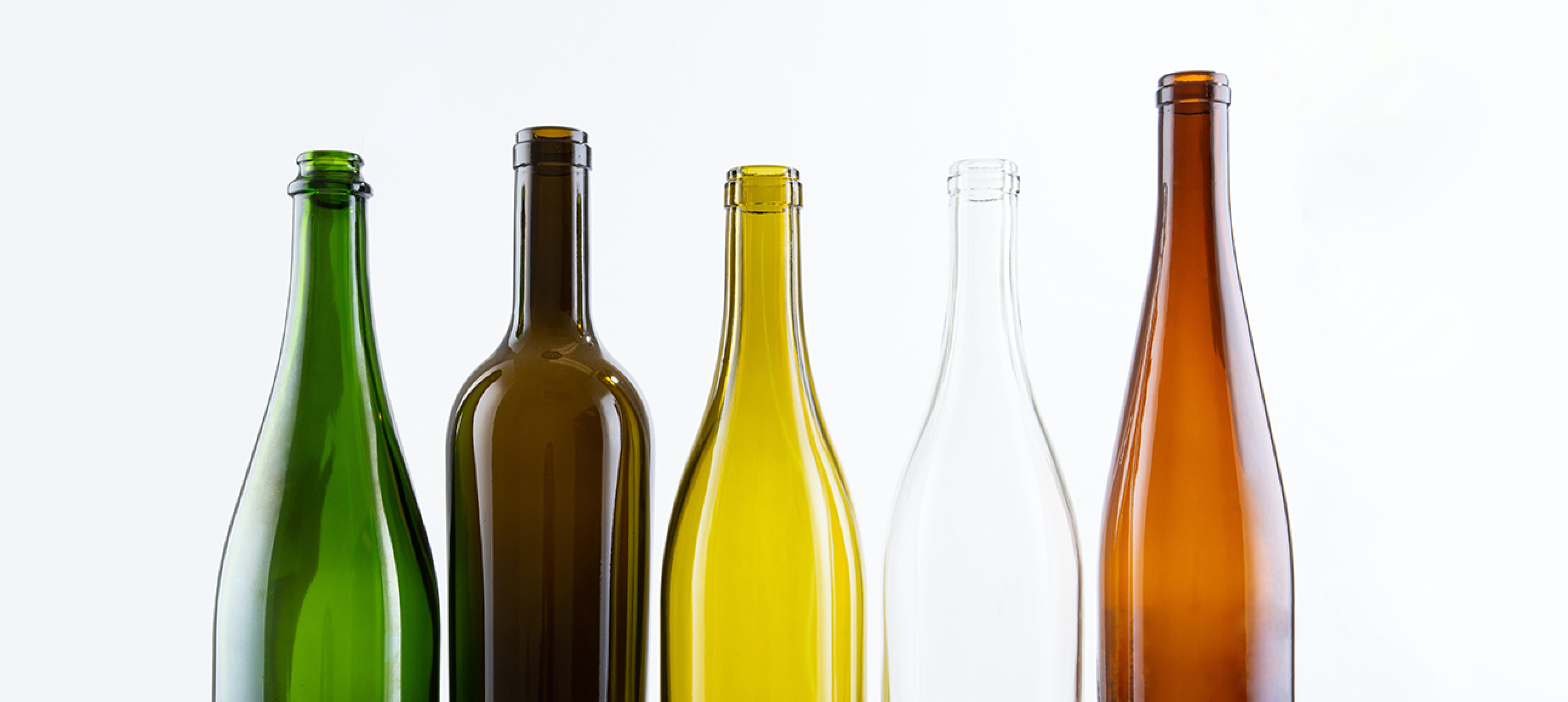
The Chemistry Behind Colors in Glass Bottles
Have you ever wondered how glass bottles get their vibrant hues? It all comes down to chemistry—specific metal oxides and compounds that, when added to molten glass, create a stunning spectrum of colors through reactions at high temperatures.
Let’s take a closer look at some of the key colorants and their effects:
Common Colorants & the Colors They Create
Cobalt Oxide delivers a brilliant blue—so potent that just a tiny amount (0.025–0.1%) is enough to achieve a rich, transparent blue, often used in premium and decorative bottles.
Iron Oxides are versatile: in small doses, they produce soft aqua or pale green; with more iron, the glass turns into the deeper green familiar in many beer bottles.
Copper Compounds can produce striking turquoise or deep blue shades. Under certain conditions, copper combined with tin can even yield ruby red glass—a favorite in art glassware.
Manganese introduces purple or amethyst tones and is sometimes used to offset the green tint caused by iron impurities in the base glass.
Selenium and Cadmium are used together to create bright reds and oranges, though cadmium’s toxicity limits its application mostly to decorative items.
Some colorants come with a touch of uniqueness—and history. For example, gold chloride in minute quantities produces a luxurious cranberry red, while uranium oxide gives glass that distinctive yellow-green glow known as “Vaseline glass,” which fluoresces under UV light.
From Lab to Life: How Color Comes Together
In practice, the final shade depends not only on the colorant but also on its concentration, the composition of the base glass, and the firing conditions. For instance, blending iron with carbon and manganese yields classic amber glass—commonly used in beer and UV-protective bottles. Similarly, white opaque glass, like milk glass, relies on additives such as tin or antimony.
Even a colorant proportion below 1% can dramatically shift the glass’s appearance. This delicate balance allows manufacturers to fine-tune colors for both function and beauty—whether it’s a protective amber brew bottle or an elegant ruby-red vase.
Through this careful chemistry, glassmakers turn simple raw materials into bottles that are not only practical but also full of character and history.
The Science Behind Green Glass Bottles
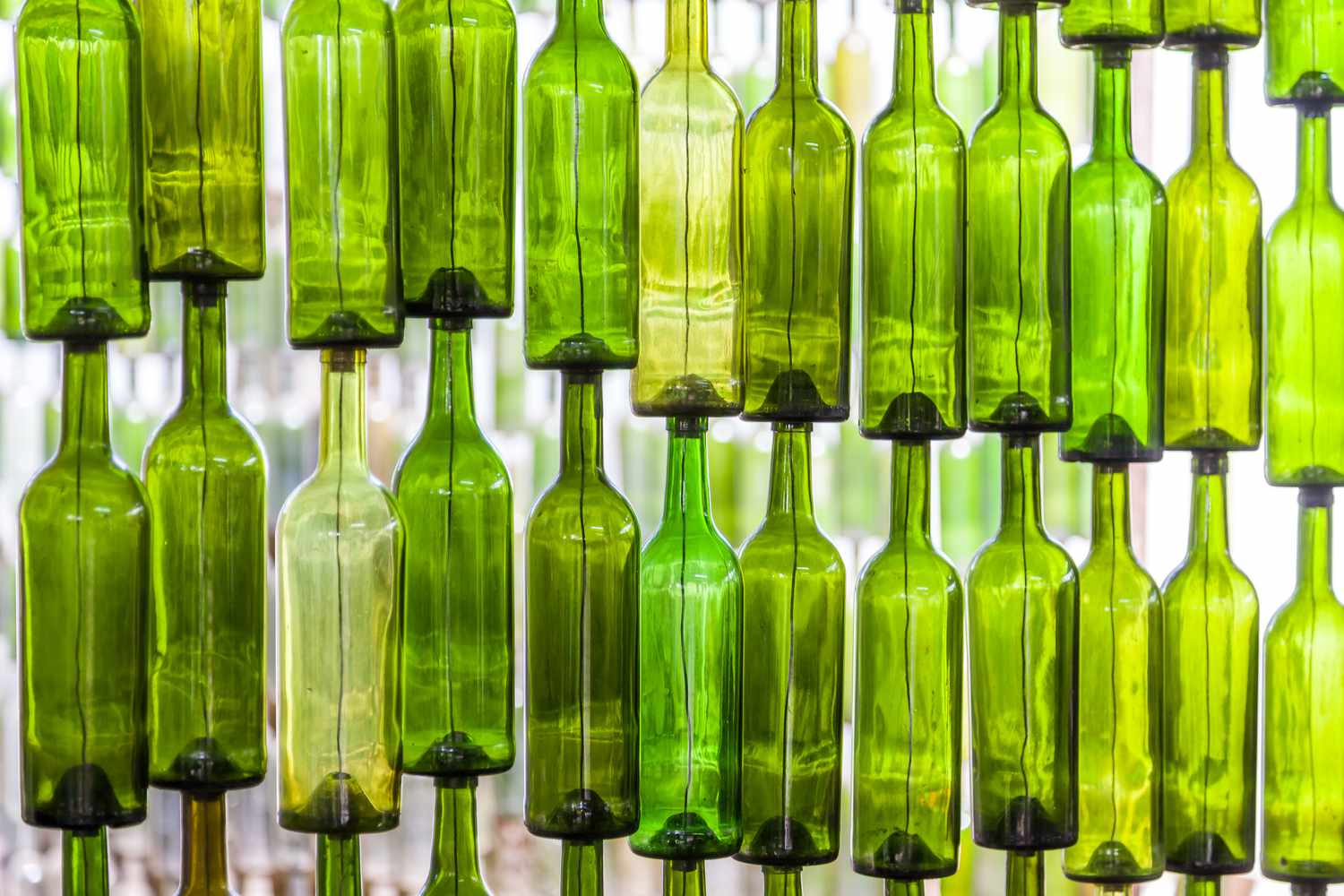
From emerald to olive, the distinct shades of green glass bottles all start with one key ingredient: chromium oxide (Cr₂O₃). But the final color isn’t just about chromium—it’s shaped by a mix of factors, including the presence of iron oxides, the melting temperature, and how the iron is oxidized during the process.
What Gives Green Glass Its Color?
Chromium oxide serves as the main colorant, producing anything from a bright emerald to a deep forest green depending on how much is used. Iron oxides also play a crucial role. Depending on their form—Fe²⁺ (blue-green) or Fe³⁺ (yellowish)—they can shift the tone toward olive or what’s often called “dead leaf” green. In some premium bottles, a tiny amount of cobalt oxide is introduced to give the green a subtle blue undertone.
Why So Many Shades?
The wide variety of green glass tones comes down to chemistry. Chromium ions (Cr³⁺) absorb blue and red light, allowing green to dominate. When iron is present, its oxidation state further fine-tunes the hue—creating everything from the classic “Georgia Green” used by beverage brands to the earthy “dead leaf” shade.
Through this careful balance of materials and heat, manufacturers create durable, visually consistent green bottles that are as functional as they are recognizable.
The Warm Chemistry of Amber Glass Bottles
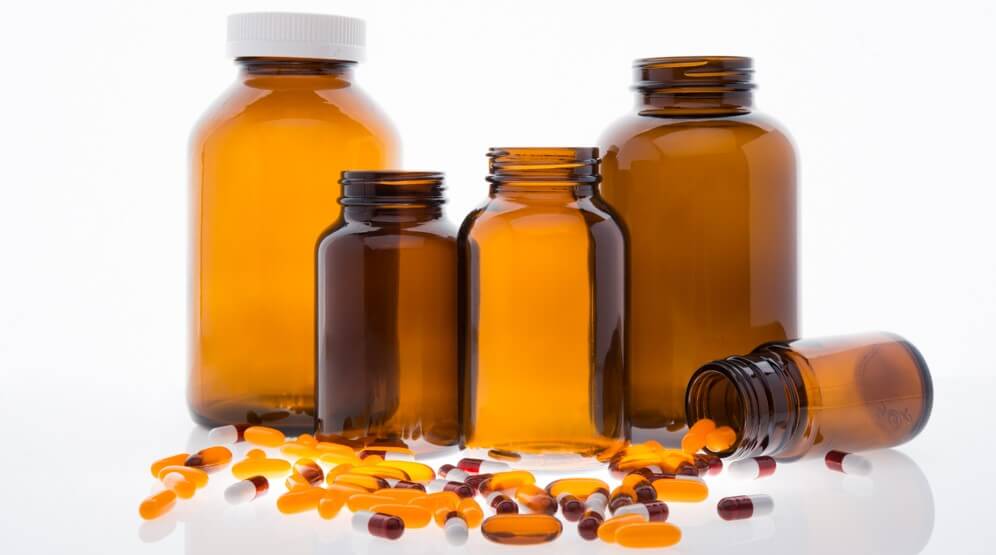
Amber glass bottles—ranging from soft golden tones to deep, nearly black browns—owe their distinctive color to a careful blend of iron, sulfur, and carbon. These materials interact during the melting process to create not just a beautiful container, but a highly functional one, blocking over 90% of UV light to protect light-sensitive contents like beer, pharmaceuticals, and certain foods.
What Creates the Amber Color?
The rich amber color comes from iron-sulfur complexes that form inside the glass matrix. Iron oxide acts as the main colorant, while sulfur helps deepen the shade. Carbon plays a supporting yet crucial role—it acts as a reducing agent, helping iron and sulfur react properly to develop the desired tone. By adjusting the amounts of these ingredients, glassmakers can produce anything from pale amber to dark brown glass.
More Than Just a Pretty Shade
Amber glass is valued not only for its warm appearance but also for its protective qualities. Dark amber bottles are especially effective at blocking UV light, making them the go-to choice for beer brewers and pharmaceutical companies. Lighter amber glass is often used in tableware and decorative items, where clarity and aesthetics take precedence.
Through a deliberate balance of raw materials and precise heating, amber glass offers both visual appeal and reliable protection—a timeless combination in the world of packaging.
The Captivating Blue of Glass Bottles: Science & Craft
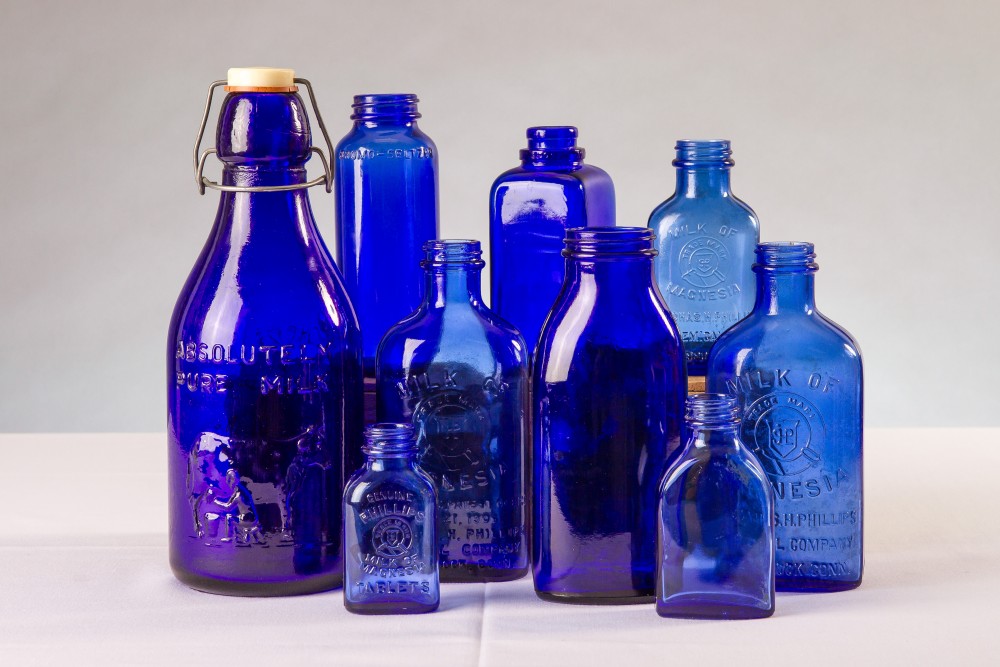
From the deep sapphire of perfume bottles to the vibrant azure of premium packaging, blue glass captures attention like few other colors. This distinctive hue primarily comes from one remarkable ingredient: cobalt oxide. Even in tiny amounts—as little as 0.01% of the batch—cobalt delivers a rich, stable blue that has become synonymous with quality and elegance.
What Gives Blue Glass Its Color?
While several compounds can influence the shade of blue glass, cobalt oxide remains the most effective and widely used. Its powerful coloring ability stems from the way cobalt ions interact with light inside the glass structure. Iron compounds are sometimes added to modify the tone, introducing aqua or greenish notes, while selenium can adjust hue—though much of it is lost during melting due to evaporation.
For specialty applications, manufacturers may also introduce titanium oxide to enhance brightness or neodymium oxide to create unique blue-purple tones, particularly in decorative glassware.
Function Meets Beauty
Beyond its visual appeal, blue glass offers practical benefits. Depending on its composition, it can transmit between 35% and 70% of visible light while providing significant UV protection. This combination makes it ideal for preserving the quality of light-sensitive products like spirits, perfumes, and specialty foods.
Although cobalt glass typically costs more to produce than standard glass, its premium appearance and protective qualities continue to make it a popular choice for brands that value distinction and durability. Through careful control of ingredients and processes, glassmakers achieve that perfect shade of blue—both beautiful and functional.
The Vibrant World of Red Glass Bottles
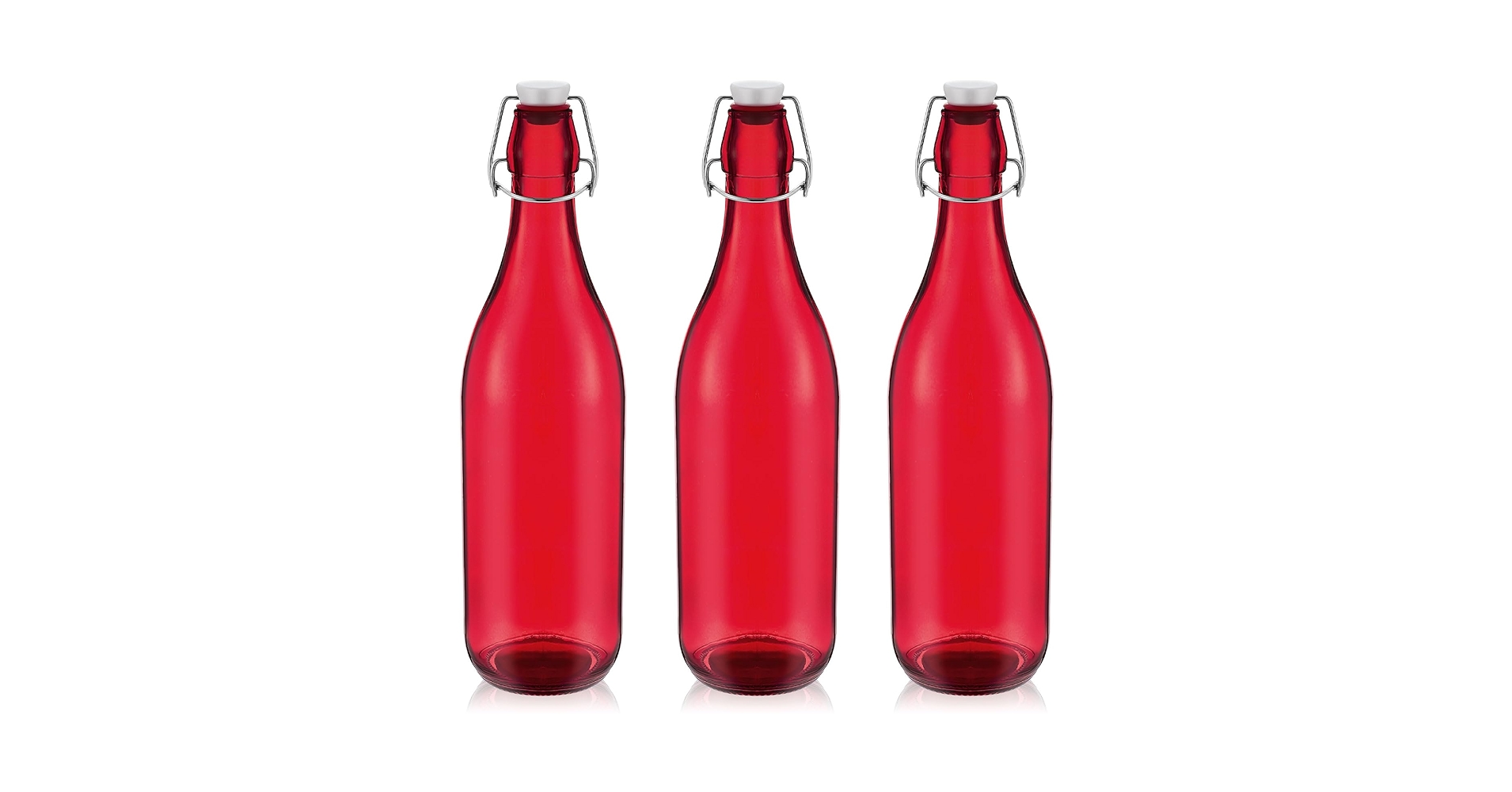
From rich ruby to bright scarlet, red glass bottles make a bold statement. Their striking color comes from a delicate balance of chemistry and craftsmanship, using metal-based compounds like selenium, copper, and sometimes even gold. Each colorant brings its own character—and challenges—to the glassmaking process.
What Creates the Red Color?
Selenium is the most common choice for commercial red glass. Under high heat and controlled atmospheric conditions, it produces a stable, vivid red that’s both strong and reliable. When combined with cadmium, it forms cadmium sulfoselenide crystals, which can yield everything from bright orange to deep crimson, depending on the ratio.
Copper offers another path to red glass. Through careful reduction and heat treatment, copper ions transform into tiny metallic particles that scatter light to create the classic “copper ruby” hue. This process requires precise temperature control—often holding the glass between 500–800°C for hours—to allow those color-giving nanoparticles to form.
For the ultimate luxury, gold can also be used. In trace amounts, gold chloride produces a deep cranberry red, though its high cost limits its use to specialty and decorative pieces.
Where Red Glass Shines
Thanks to its eye-catching appeal and functional light-blocking properties, red glass is often used in pharmaceutical packaging, premium beverages, and luxury cosmetics. Selenium-based reds dominate the commercial market for their balance of cost and performance, while copper ruby glass remains a favorite in fine tableware and art glass for its deep, transparent glow.
Through a blend of tradition and technology, red glass continues to offer a mix of beauty, protection, and prestige—one bottle at a time.
Beyond the Basics: Specialty Colors in Glass Bottles
While most glass bottles rely on common metal oxides for color, a world of unique and captivating shades exists beyond the standard palette. Specialty colorants—like nickel, metallic selenium, and chromium—allow manufacturers to create distinctive bottles that stand out in premium and niche markets.
Creating Uncommon Colors
Certain elements give glass its more unusual hues. Nickel, for instance, can produce subtle violet or rich brown tones, adding an air of exclusivity to luxury packaging. Metallic selenium is key for achieving vibrant, true reds—a bold choice for brands seeking maximum shelf impact. Chromium oxide, when precisely controlled, enables a range of greens from deep emerald to muted olive, often seen in high-end beverage and cosmetic lines.
Even familiar elements like copper can yield surprises; under specific conditions, it can create custom blue tints rather than its typical red.
Two Paths to Color
There are two main methods for applying these specialty shades. The most durable approach is intrinsic coloration, where colorants are melted directly into the glass, ensuring the color remains vivid and consistent throughout the bottle’s life.
Alternatively, surface coating offers more flexibility. This technique involves applying colored layers to finished glass, making it ideal for limited editions or designs that require frequent color changes. While less permanent, it allows for rapid customization without altering the core glass composition.
The Value of Distinctiveness
Using specialty colorants involves higher costs and more precise manufacturing control, as even slight variations in temperature or batch composition can alter the final shade. Yet for many brands, this investment pays off by enabling stronger visual identity and supporting a premium market position. These unique colors not only attract attention but also help justify higher price points, offering a clear way to differentiate products in a crowded marketplace.
Through careful selection and application of these specialty colorants, glassmakers help brands tell a more compelling story—one bottle at a time.
Conclusion
From the vibrant chemistry of colorants to the precise control of melting and forming processes, Colored Glass Bottle manufacturing is a remarkable blend of science and craftsmanship. Each bottle tells a story of transformation—where raw materials like sand and metal oxides fuse under intense heat to become functional, beautiful containers.
At TP Glass Bottle Manufacturer, we master this art and science to deliver excellence. With advanced production technology and deep expertise in color formulation, we help brands create distinctive packaging that stands out on the shelf and protects what matters inside. Whether you need UV-blocking amber bottles, premium cobalt-blue containers, or custom specialty shades, we offer end-to-end solutions—from design support to consistent, high-volume production.
Let’s bring clarity and color to your next packaging project. contact us today to discover how TP Glass can become your trusted glass bottle partner.

